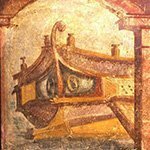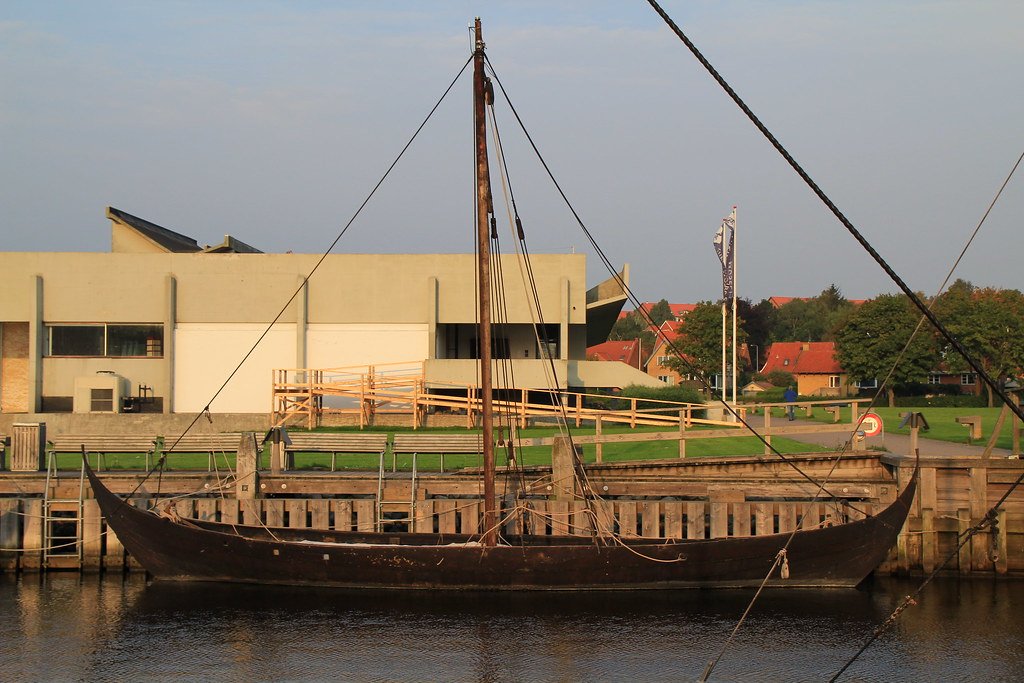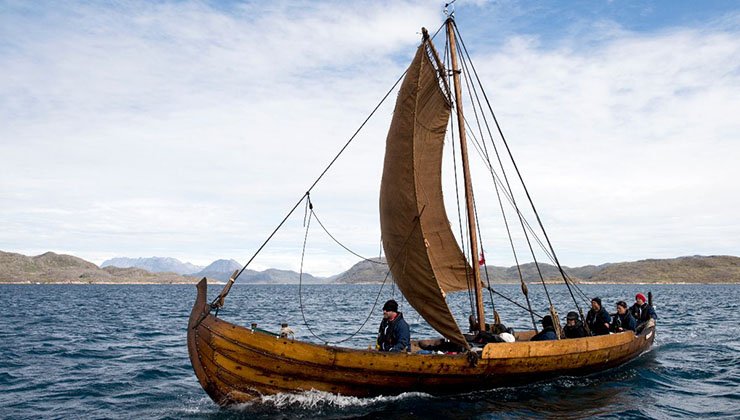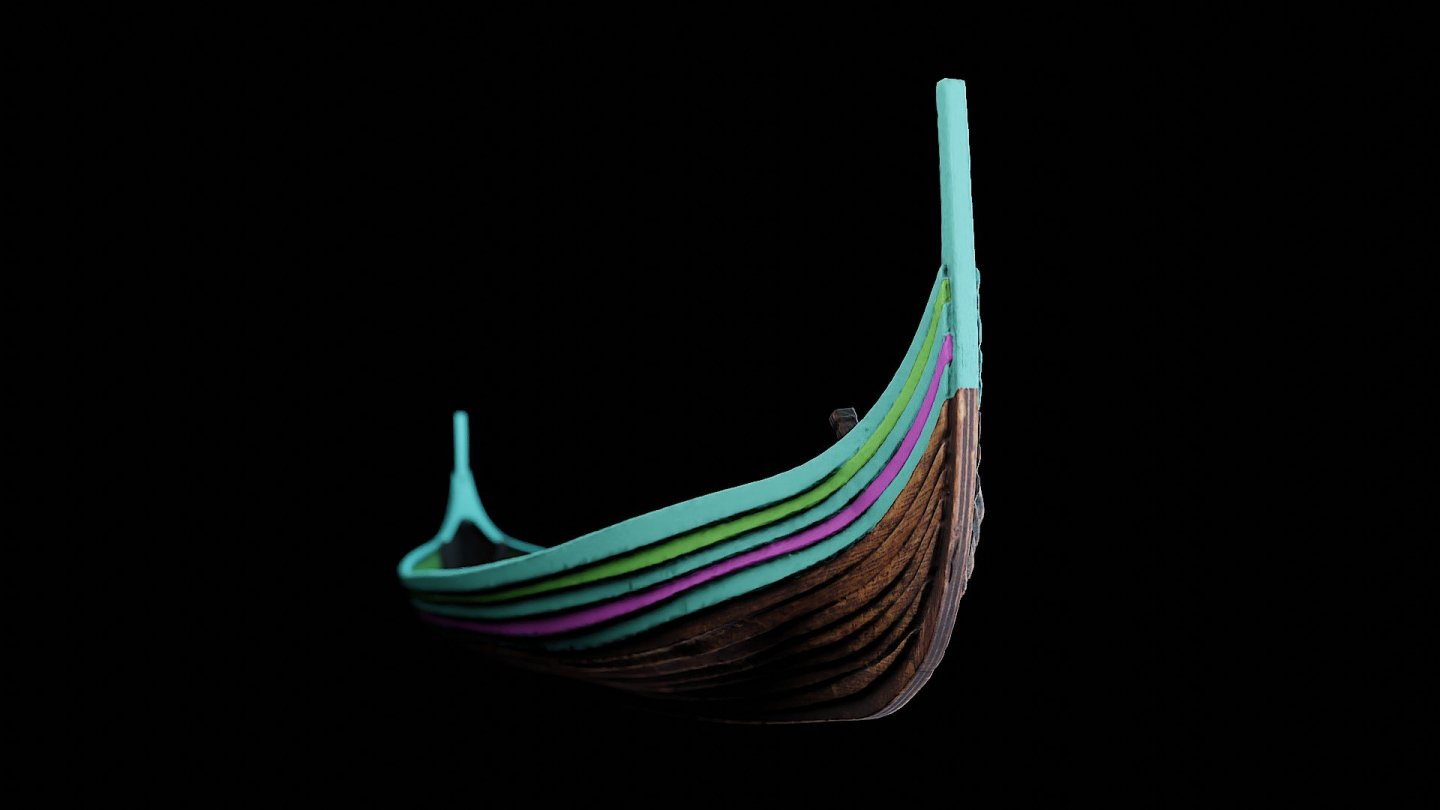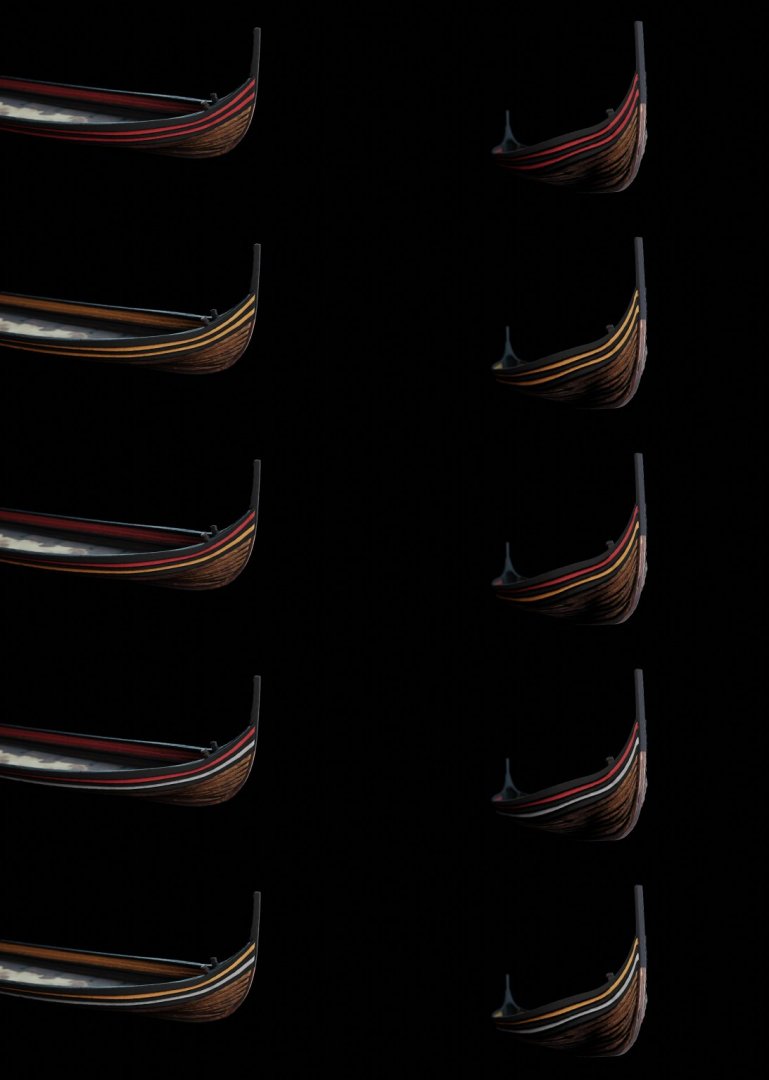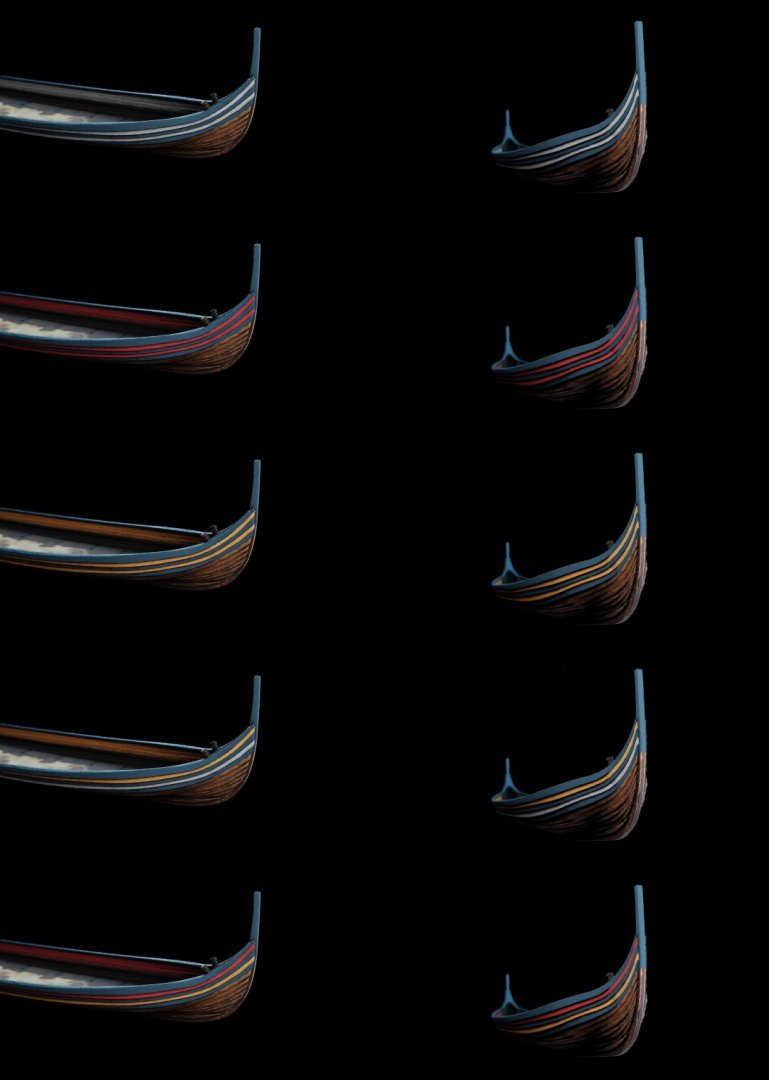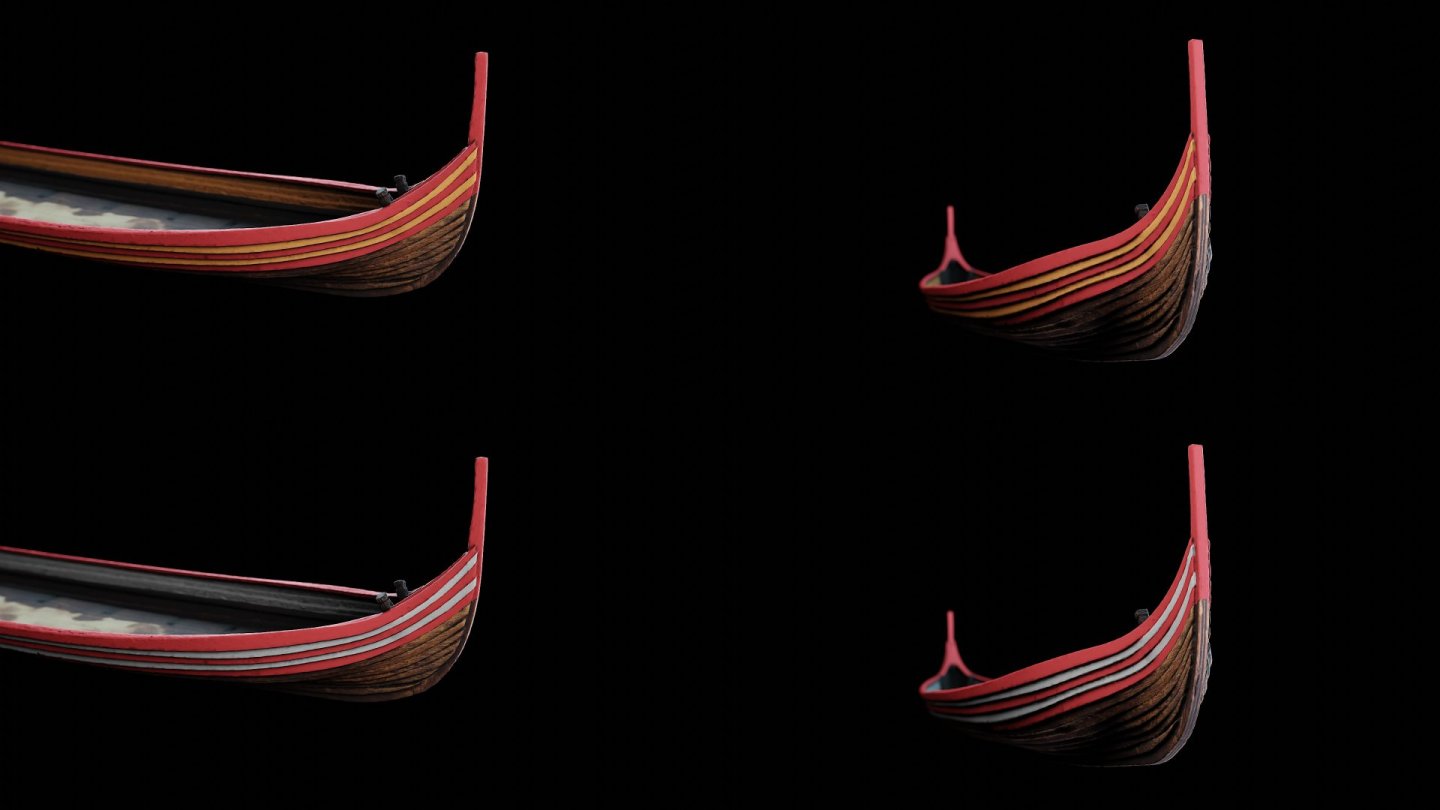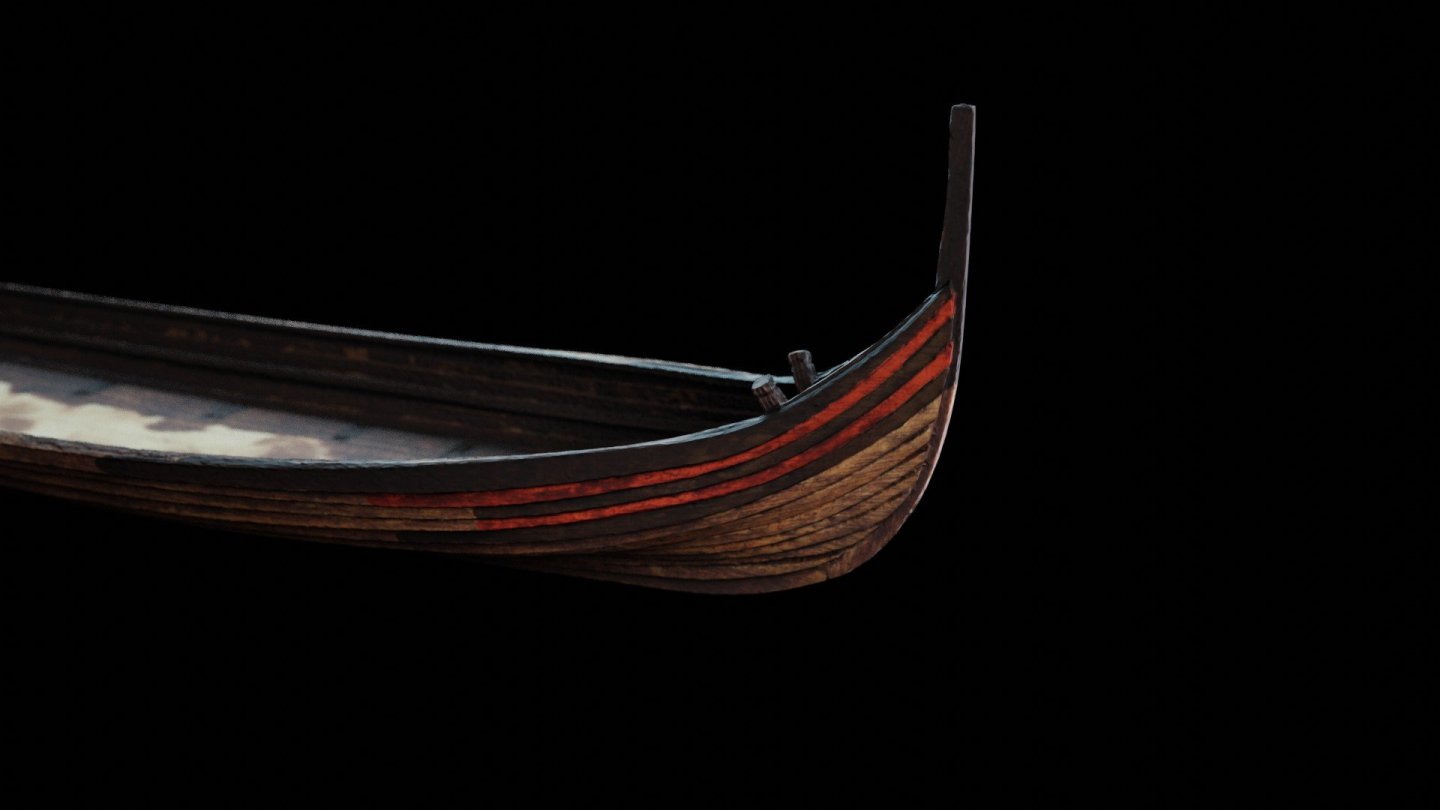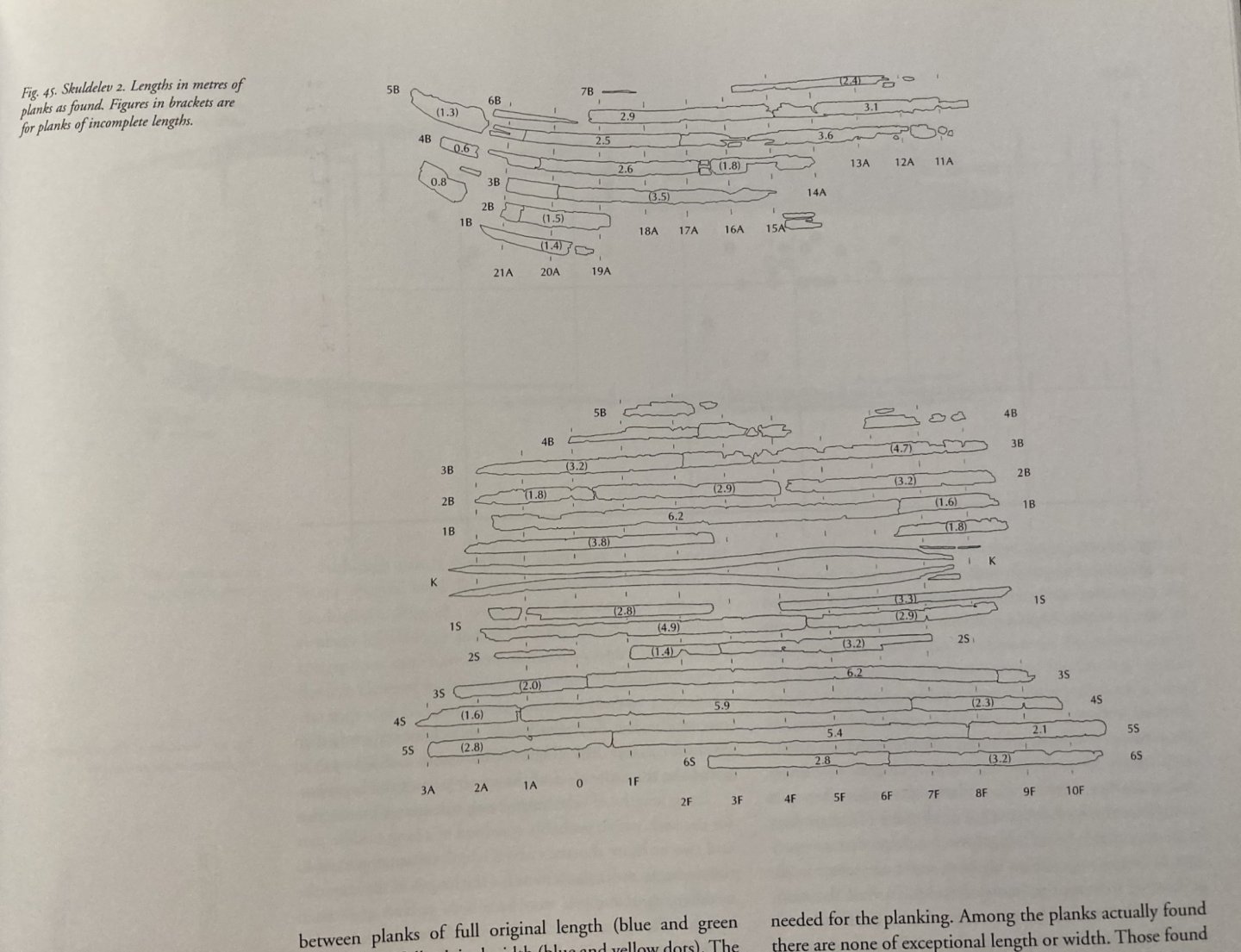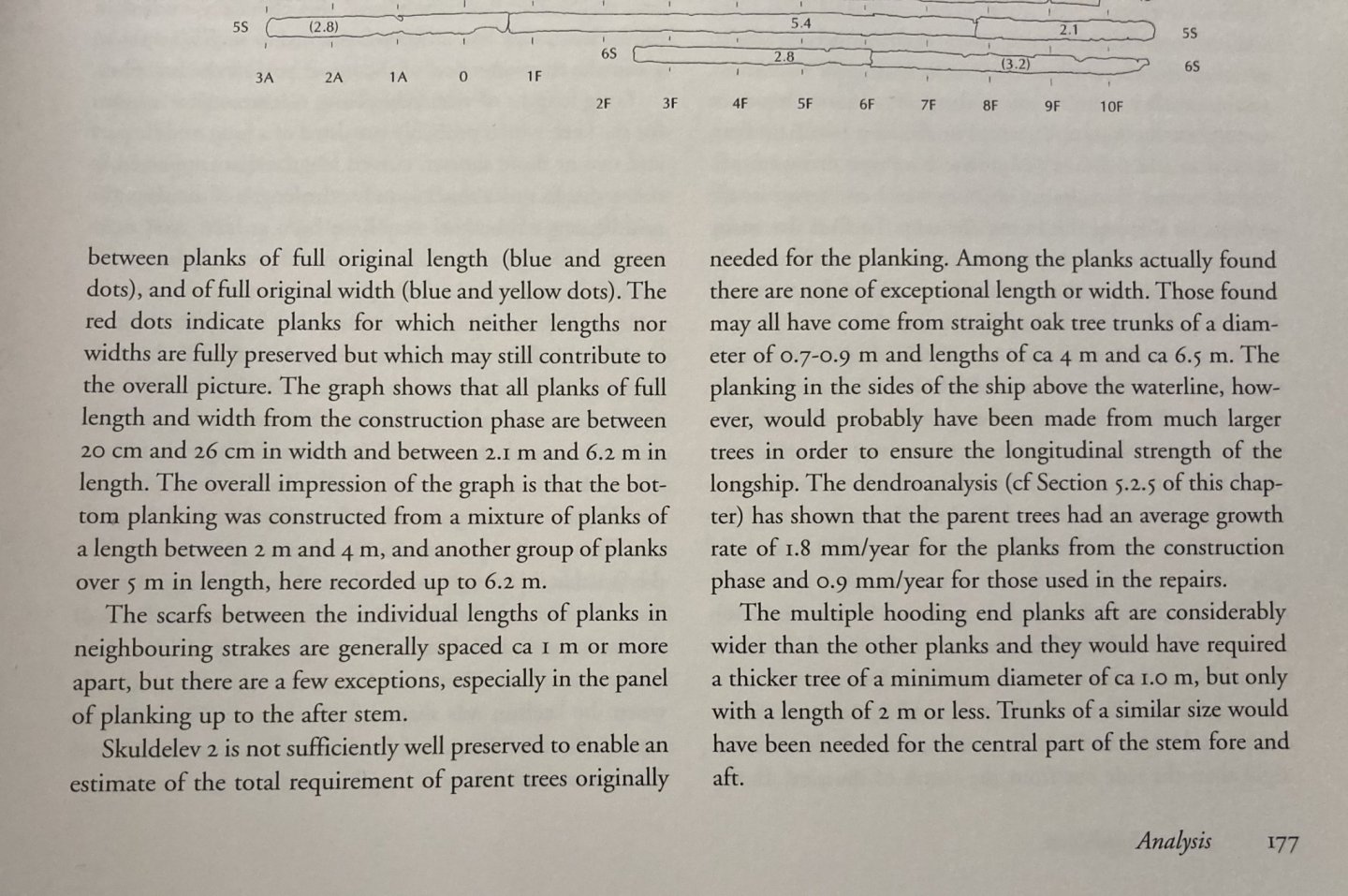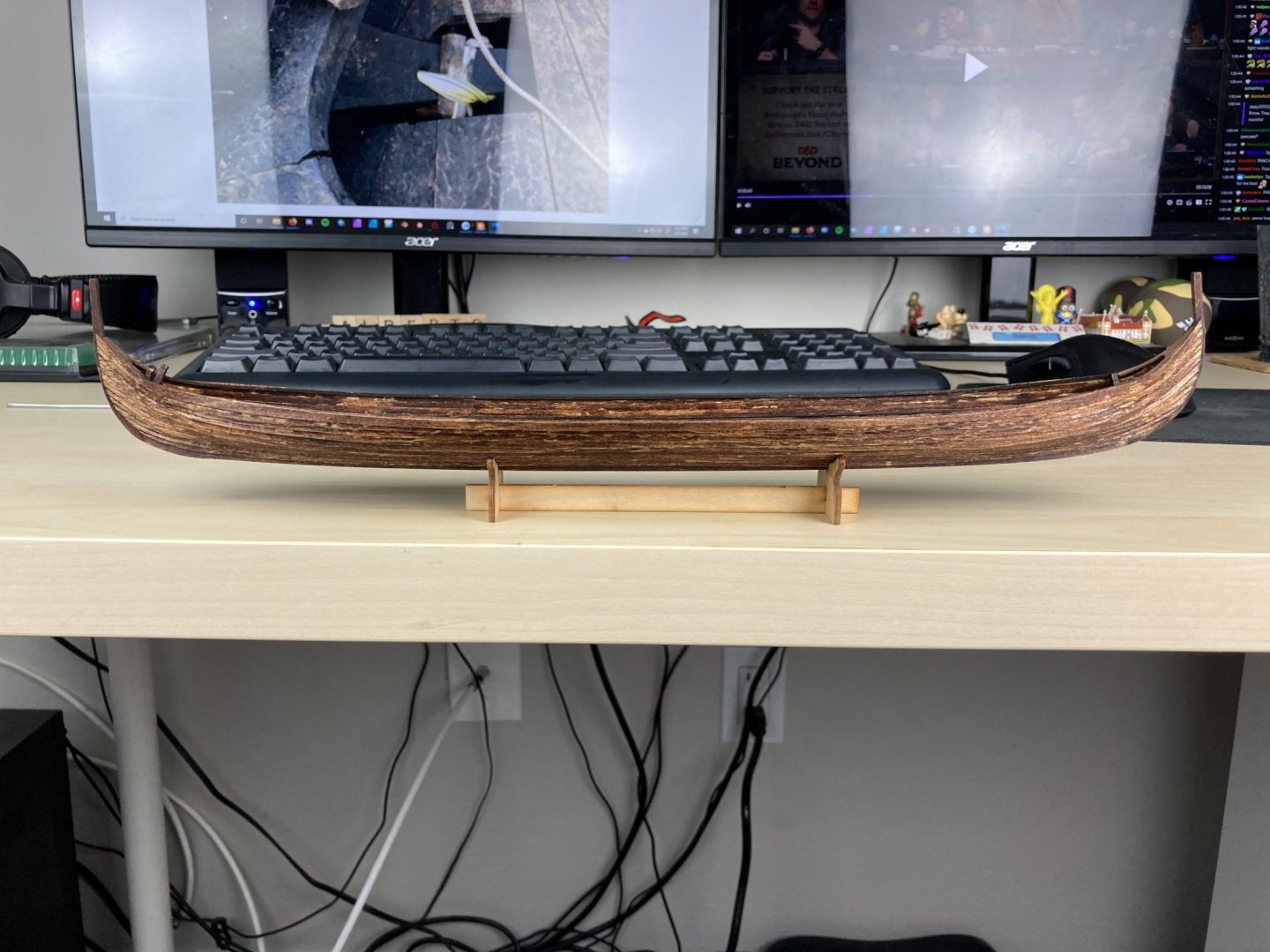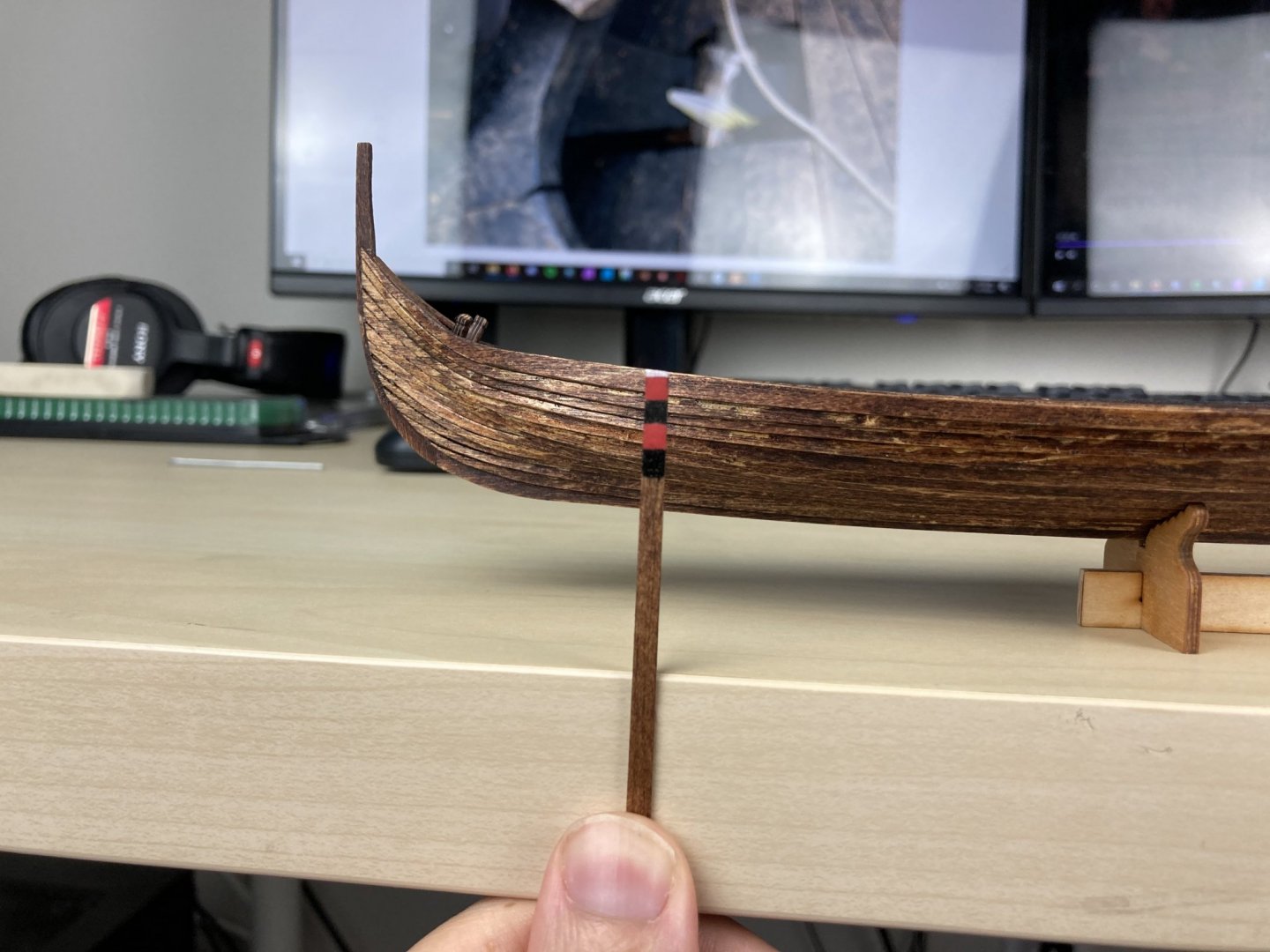-
Posts
151 -
Joined
-
Last visited
Content Type
Profiles
Forums
Gallery
Events
Everything posted by Binho
-
I had thought the cog was purely a northern European phenomenon, from the North Sea and the baltic? I've heard this before though. After seeing woodrat's excellent carrack/cocha however, what struck me is how much the medieval Mediterranean ships look like earlier Roman ships with fore/aft castles bolted on to them - even down to the multiple prominent wales and the curved stems. Since learning about the super unique Romano-Celtic Blackfriars 1 wreck from around 150 CE (look it up, it's really weird!), I've been wondering how that fits in to the history and evolution of northern European ships too. EDIT: Lol, guess I answered my own question there without noticing - are the castles and stern-post mounted rudder what was copied from the cog in the Med? But back on topic, this is a really cool build idea Silverman! I like these different build ideas like this. That two footer mast is very interesting! It's coming along nicely too, looking forward to how it progresses!
-
I hadn't thought of remaking the shields in a thinner material, that's a great idea actually. I had thought about making the shield rack out of card so it's more to scale. Another solution I'd thought of was 3D printing. Since I have the model scanned now, I model a shield rack that fits perfectly on to the hull, and then shields that would fit in to it too. That would all remove the challenge of making things by hand though I actually just recently found out about how thin viking shield were, actually! Someone who bought my Skuldelev 5 3D model messaged me and nicely pointed out my shields were incorrect. I think you especially would be interested in what this guy does Steven, if you don't know him already! He started out as a Viking re-enactor and he now studies medieval European martial arts and early medieval swords. His name is Roland Warzecha, but online he goes by Dimicator - he has a cool youtube channel and is also on facebook and patreon. One interesting theory he is working on publishing is that he has noticed that most early medieval actually have off-center and twisted pommels, and he reckons this was for ergonomic purposes. EDIT: One thing I've been struggling with is how to represent the rivets on the planking. At this scale they would be tiny - about a 1/3 of a mm! Doing a couple of thousand of those would take absolute ages if I were to use copper wire or something, plus I don't think the overlap of the planks in the kit is consistent enough for that to work. The solution I settled on is simple - just a fine black felt tipped pen! I tried it out on the strakes that will be painted in case it didn't look good, and was pretty satisfied with the result. It's subtle but does add something. My new problem is how to represent the rivets on the painted strakes. For that, I think I'll use a toothpick or needle to apply a tiny dot of a lighter version of my final planking colors.
-
I don't want to over-stress the possibility regional differences too much, I may have even over interpreted what the authors were saying myself - it could also be different construction techniques based on different ship typologies. The ship carvings in the Fantoft stave church in Norway show a wide variety of different stem shapes. Here is a bit more about the Skjoldungen, including a comparison with the Kraka Fyr line drawing. There are photos of the different stem construction too. I think Kraka Fyr looks stretched in part due to the angle of the photo. The Skuldelev 5 however, where the stem was still attached to the keel and the port side planking and so the reconstruction is a bit more certain, looks just as stretched: I'm almost certain construction and aesthetic styles would have varied over time! I don't think we have enough data to say exactly how though
-
I’m a Roman archaeologist by training, but as a commercial archaeologist I work on local Southern California archaeology - prehistory, and historic. It’s all pretty interesting even if it’s not why I studied archaeology originally, but life takes us in unpredictable directions sometimes In terms of stem/stern just wanted to share an interesting thing I learned from the Skuldelev excavation report. The norse were not a cultural monolith, and it appears that the Norwegian stem/stern design (Gokstad, Oseberg, and Skuldelev 1) may have been different from the Danish/Irish way. The Norwegians appear to not have used the distinctive stepped stem known from Skuldeled 2, 3, 5, and some Irish bog finds. They seem to have used a more rounded stem/stern with a rabbet which the planks attached to directly, like in Oseberg, Gokstad, Skuldelev 1, and some isolated Norwegian finds. Interestingly, the Viking Ship Museum’s first reconstruction of Skuldelev 6 (Norwegian built fishing vessel) used a ‘Danish’ style stem/stern design. But more recently, since they noticed the possible cultural difference, they reconstructed it again with a more ‘Norwegian’ style, more similar in profile to Skuldelev 1: Kraka Fyr, original Skuldelev 6 reconstruction Skjoldungen, the new interpretation. Also shows how much archaeological finds can be open to interpretation sometimes!
-
@KrisWood Thanks for all those sources! The excavation looks a lot more organized then I thought, I'm going to enjoy going through that report. Sorry to have taken you off on a tangent, I'm really enjoying your process and I think it will be an excellent model! As an archaeologist, I'm just wary of people reading too much in to the product of archaeologists, lol. It looks like Glende at least took careful measurements. My thought was just that since he had to distort the shape of the planks to fit the going hypothesis, if all his measurements were accurate, then everything else would have probably gotten distorted too. I'm excited to see your final build though and how you interpret it all!
-
Yeah, the clinker to carvel transition really got me at first. It's really hard to get right, and it's not really explained that that's what you have to do! Yours came out nicely though! I think they made the planks longer than necessary so there would be more room for error. Had to trim them back on mine too. I wish the stem/stern pieces had been more accurate too, but agree that's the nature of making a simplified kit. The Skuldelev 2 only had the stern preserved, and it is more complex than on the smaller ships. It's actually in three pieces scarved together - and the planks don't even connect directly too it - six of the planks attach to two "stem-wings" which then attach to the stem. I can post pictures later if you're interested, but I don't think that would be easy to do in a kit or even carve by hand!
-
Thanks for the feedback everyone! It's been hot as hell here in California. Luckily I'm far away from all the fires. But it means I've spent my time off under the fan playing video games and watching TV as in the evening both my office and the garage turn in to a sauna and I don't want to do anything in them. I'm kind of hoping the heat and unusual humidity don't warp the model! Yeah, that's what they used to pick the colors for the Skuldelev ship reconstructions! We don't have much else to work with unfortunately, but at least in terms of the colors used it doesn't seem too unrealistic. Originally I didn't want to go with the same colors as the Sea Stallion (blue-red-yellow) or the Helge Ask (red-yellow) just to make mine more unique. I'll add them to the finalists though. I think I like the black-red, black-yellow, and black-red-yellow too. I'm going to just render those, and I'm also going to try varying the color of the stem/stern posts and see what that looks like. I haven't decided what to do with the shields yet. Both the Osberg and Skuldelev 5 had a 'shield rack' but the shields in the kit are too thick to fit in a 'shield rack that is to scale. I might still do a rack, but then just use it to hang the shields instead of having them slot in to it. The plans call for drilling holes in to the upper strake to pass the thread that holds the shields up, but I don't like that solution. I might need to get more wood for that, although I'm going to try and reuse my scraps first! @Ark-itecht I'm eyeing up the Knarr 1/72 next! Good luck with that, I'll follow your build with interest Yeah, finding a good stain is hard. The tar seem to vary tremendously in color based on how recently it was applied, age of the ship, etc.
-
Ah, so there actually are stratigraphic drawings and the like! Cool! How have you been finding them? I’d be really interested to see them all. Do they have Glende’s original excavation drawings too? There is so much info online, but it can be hard to find sometimes. I was also hoping the full 1917 excavation report would be online, but haven’t been able to find it. I guess my main point of contention is that the off-axis frames are being interpreted as an intentional design feature, when to me they look to be an artifact of Gelde’s preferred reconstruction. According to a google translate of the part of Bischoff’s paper that deals with the background of Gelde’s drawings (pg. 18 of the PDF you linked earlier in the thread), while generally very accurate, some of Gelde’s excavation drawings were nevertheless incomplete or had incorrect measurements, in part because some sections of the ship were so fragmentary. His 1909 reconstruction you linked was drawn after the ship had been re-erected, with extra measurements taken during the process. It was also based on the going theory at the time that the oarports had to be as level as possible, which is what ultimately produced the squished shape in Gelde’s reconstruction and the following ones. Even with accurate measurements, it’s easy to contort things if you have a specific theory in mind.
-
Smart idea with the binder clip aligners, wish I had thought of that! I had the same issues getting the strakes to fit in each others' curves, but it did get better as I built updwards.
-
Hey Kris, those highly detailed drawings are not actually 'in situ' archaeological drawings, they are reconstructions themselves. Don't rely on them too heavily. The actual ship was severely distorted and fragmentary when found, having been compressed under multiple tons of dirt for some 1200 years. The floor timbers in some places were actually sticking up above the sheerstrake: More of the actual excavation photos are here: http://viking.archeurope.info/index.php?page=oseberg-ship-the-excavation In 1904 archaeology was still pretty dodgy in a lot of places. Idealized reconstructions like that were pretty common. It was only really in the 1920's and 30's that archaeology became more systematic. I don't think we have actual drawings of what either the Oseberg or the Gokstad looked like when actually found. To me it's seems unlikely that the frames were actually leaning like that. It looks like they reconstructed the ship without enough rocker, having straightened out the keel so it looked "better", and then tried to make the warped frames fit the reconstructed hull line. In the Skuldelev ships the floors/frames appear to have been roughly perpendicular to the keel. I'd rely more on the recently published reconstruction and the Saga Oseberg, and go with frame angles that work for you. Use the original drawings more for reference of construction details than actual plans.
-
Looking awesome! Getting real close now. I'm excited to see it with all the shields too!
-
As far as I'm aware, the only archaeological evidence for color comes from the shields on the Gokstad ship, which were painted alternating yellow and black. In terms of textual evidence, pages 21-22 of Nicolaysen's 1882 Gokstad excavation report discuses color. Apparently in the Heimskringla saga it is stated that Aasbjorn Selsbane's (1002-1024 CE) ship was painted red and white above the water line. In terms of iconography, our main source for color is the Bayeux tapestry which shows ships with strakes of alternating colors. Of course, the colors and color schemes on the tapestry may be entirely abstract, but it's the best we have. Thanks Balclutha! Yes, I will be painting carefully using masking tape. It would have been smarter to paint it first though! One of the great things about testing the colors on a 3D model is it's easy to set it up so you can really quickly change the colors and experiment with multiple different schemes. Here is the final one I am going with, from the (10)80's: Just kidding I did however test a whole bunch of different color schemes. I'm still deciding which one is my favorite, there's quite a few that look good. I have a feeling like in the end I'm just going to stick with my original black-red-yellow scheme, haha. Although it does feel a bit German...What do you guys think? Any of you other Viking ship builders, feel free to use these to pick a scheme for your ships if you decide to paint them!
-
The scoring is a cool idea! Are you going to attempt to score the decorative moulding lines too? I was going to try, but at my scale it's too fidgety. You are doing great! A lot fewer false starts than me. I did my share of complaining too because of the vague instructions. Honestly though, after the first two or three strakes it all started to make sense and went much smoother. Don't forget that above the deck line there are two internal stringers that will help strengthen the hull and, in your case especially, hold the planks in each strake together.
-
You totally can! I've even gotten good results with my phone. All you need is a series of sharp images with sufficient overlap. Obviously, the better the camera and lens the better the results, but with my $300 DSLR I can as good, if not better, results than a $3,000 laser scanner. I'll PM you more info.
-
Thanks! I'll post some renders when I have time to do some painting on the digital model later tonight. No, it's a hobby at the moment. Photo scanning has a relatively low point of entry. You just need a digital camera and some photogrammetry software. There's open source software like Meshroom, but I bought the Standard Edition of Metashape which is only US$180. I'm trying to do it professionally too, it's very useful for cultural heritage applications. In fact, just today our company was just awarded a grant to record some Native American sites in the desert out here using drone based photogrammetry. I'll be helping out with that, and bringing my camera along to do closeups of any rock art the drone can't capture. Hopefully that will lead to more professional photogrammetry projects in the future!
-
bigpetr is right on the provenance for the Skuldelev ships. For the Oseberg ship, the oak appears to be from western Norway, and not local to the immediate area the ship was buried. The presence of beech in the ship might narrow it's construction location in western Norway even more, to just north of Bergen, where there is the only beech wood in that area. This is roughly the same area the two later Skuldelev ships from Norway were built. You can read more here, pg. 6 talks about the Oseberg ship building location. That's interesting! I don't believe this view is true anymore. From pollen samples in British bog sites it seems most of Northern England, Wales, and Southern Scotland was Oak-Hazel woodland. Woodland clearance rates seem to have peaked in the Early Iron Age, well before the Romans arrived. By the Roman period, only about 50% of the woodlands survived (in fact, Caesar mentions how intensively farmed southern England was in his writings). It doesn't seem the Roman occupation caused any more extensive deforestation than before. By the Norman arrival woodland cover was only 15%, and by the Black Death it was 10%. Good summary here. It's actually increased since then! But a lot of that is managed woodland, especially fast growing pines.
-
So here's something a little different! I decided to do a photoscan of the model at the current stage. This will also allow me to do a color test on it without actually having to start on the painting. Annoyingly, it doesn't seem like it's possible to embed the sketchfab viewer in to the post, but you can check it out here: https://sketchfab.com/3d-models/viking-longship-model-9202dc5a7dd6421f90af22007fcdb2c9
-
Steven is right, the clinker definitely holds it all together. The overlap on my smaller model is 1mm or less in some places and there are no stability issues whatsoever. I think your best bet is to keep some filler ready to put between any small gaps in the planks. I think it will work much better than you think once you get started, that's how it was for me. In terms of scarphs, on all five Skuldelev wrecks they were just simple overlapping scarphs held together by a few rivets. The frames couldn't go over the joints because the rivets were there. Also the treenails that held the frames in place would probably have weakend the scarph joint since the overlap was actually fairly small. The frame positions of Skuldelev 2 are marked in the drawing I posted above, you can see none of the surviving joints is over a frame. Below is a pic from the new reconstruction of the Skuldelev 3 at the Roskilde Viking Ship Museum showing the scarphs. I highly recommend their website if you don't know it. Here's their Skuldelev 3 reconstruction gallery, and here is their highly detailed section about Longships, including Skuldelev 2.
-
Thanks! I'll go ahead with painting it once it dries. I want to paint it before I start on the inside. I'm probably going to paint part of the inside red too. Hopefully I'll have time this weekend. Yeah, same applies to texturing 3D models. I was going to weather it eventually, but wasn't expecting to start it so soon
-
Here you go, straight from the excavation report. In short, the planks found all came from the bottom of the ship. They ranged between 2-6.5m (7-20’). They think the planks above the water line may have been longer though.
About us
Modelshipworld - Advancing Ship Modeling through Research
SSL Secured
Your security is important for us so this Website is SSL-Secured
NRG Mailing Address
Nautical Research Guild
237 South Lincoln Street
Westmont IL, 60559-1917
Model Ship World ® and the MSW logo are Registered Trademarks, and belong to the Nautical Research Guild (United States Patent and Trademark Office: No. 6,929,264 & No. 6,929,274, registered Dec. 20, 2022)
Helpful Links
About the NRG
If you enjoy building ship models that are historically accurate as well as beautiful, then The Nautical Research Guild (NRG) is just right for you.
The Guild is a non-profit educational organization whose mission is to “Advance Ship Modeling Through Research”. We provide support to our members in their efforts to raise the quality of their model ships.
The Nautical Research Guild has published our world-renowned quarterly magazine, The Nautical Research Journal, since 1955. The pages of the Journal are full of articles by accomplished ship modelers who show you how they create those exquisite details on their models, and by maritime historians who show you the correct details to build. The Journal is available in both print and digital editions. Go to the NRG web site (www.thenrg.org) to download a complimentary digital copy of the Journal. The NRG also publishes plan sets, books and compilations of back issues of the Journal and the former Ships in Scale and Model Ship Builder magazines.


